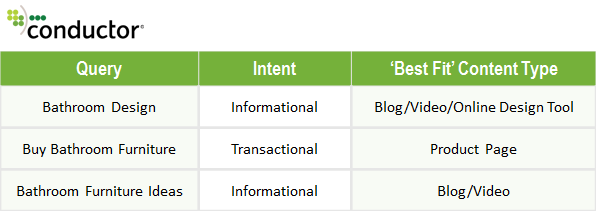Online Marketers: Make Sure You Surface The Right Content To Your Audience
When it comes to online marketing, the conventional wisdom has been that the overarching goal is to have content — any content, so long as it links back to my website — appear in front of the user. Put another way, the thinking for many has long been that the singularly-focused goal is to appear […]
When it comes to online marketing, the conventional wisdom has been that the overarching goal is to have content — any content, so long as it links back to my website — appear in front of the user.
Put another way, the thinking for many has long been that the singularly-focused goal is to appear as high as possible in the search listings, no matter the relationship between the content surfaced and the actual user query.
A Shifting Landscape Toward Content Relevancy
Many marketers have come to realize that it may no longer be enough to drop searchers onto any old page on their website. Online users have become increasingly sophisticated.
B2C buyers have long done the lion’s share of purchase research online on their own, and recent research from CEB’s Marketing Leadership Council shows that even B2B buyers are now doing the bulk of their own research online before buying. According to this research, today’s B2B buyers do not contact suppliers until 57 percent of the purchase process is complete.
The implication for marketers here is that it’s no longer enough to check off the “online marketing” box on a marketing plan once you’re ranking for the queries that matter to you. Now, we must be sure we are surfacing the right content.
To do that, we must first understand what the “right” content is. The first step in doing so is to ask what the intent of the searcher is in posing their query to the search engine. Once we have a good answer to that, the query can be mapped to the appropriate content type.
For example, the traditional marketing schema has a home furnishings retailer surfacing a bathroom furniture product page with pricing and purchase information for the query “bathroom design.”
In the new paradigm, by first considering user intent, we identify that a searcher of “bathroom design” is likely in a research/information state of mind rather than a purchase/transactional one. Knowing this, the retailer can surface content such as a blog post, video, or an online design tool that helps the searcher make an informed purchase decision rather than surfacing a transaction-oriented product page.
Contrast that with the query “buy bathroom furniture,” where the searcher is clearly in a transactional state of mind, and it is appropriate to surface a product page with pricing and product information.
Consider User Intent To Surface The Right Content
To be sure, it is difficult enough for us marketers to consistently appear at the top of the search results for our primary keywords. But, if we can start thinking from the perspective of the searcher and consider their state of mind when they are searching for information, we can better provide them with the kind of content they are looking for which in turn leads to higher conversion rates, more links and more shares.
And, it has been widely suggested that Google looks closely at search results bounce rate — what AJ Kohn refers to as “time to long-click” — as a ranking factor. This means that they measure the rate that search visitors visit your site and then bounce back to the search results page to click on another result. This suggests there are ranking incentives beyond the loss of the immediate visitor for serving up the “right” content.
So, wherever you are in maturity of your search practice, think about how you might start to map searcher intent to content type. The cost of not doing so is a high bounce rate as visitors look elsewhere for answers that better map to their intent, and the possibility of a broad impact to your site’s search visibility as Google sees searchers consistently bouncing from your site.
Contributing authors are invited to create content for Search Engine Land and are chosen for their expertise and contribution to the search community. Our contributors work under the oversight of the editorial staff and contributions are checked for quality and relevance to our readers. The opinions they express are their own.
Related stories
New on Search Engine Land
